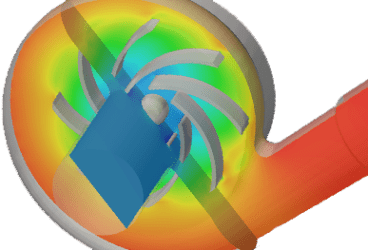Developed by the American Society of Civil Engineers, ASCE 7 is an engineering code that provides a set of minimum requirements for the structural resistance of a building. The building code is expressed in terms of the minimum loads that structural components must be able to withstand in a safe and reliable manner, setting standards for both principal (e.g., beams, columns) and secondary (e.g., cladding) members.
While ASCE 7 covers loads from a variety of sources (including gravity and natural disasters), one of the primary concerns for building developers looking to meet this standard is wind loads. This is an especially important consideration for high-rise buildings or bridges, where wind loads can have a considerable influence on the design process.
Code Philosophy and Compliance
Engineering codes such as ASCE 7 arose from the need to prevent catastrophes related to buildings and other man-built systems. Their primary goal is to guarantee that a given construction or installation is safe and secure to be used for its intended purpose. Every common element that may pose a safety risk is generally covered by an engineering code, from electrical wiring to piping, boilers, pressure vessels, tanks, and entire structures.
While every code is different, they all follow the same philosophy: to provide minimum standards and proven practices to engineers at every stage of a project, from conception through to construction and operation, installing confidence that the final product is safe, reliable and efficient. They may include regulations, calculations, and quality control requirements. Some codes are required by law, while others are enforced by the project stakeholders.
Engineers must be familiar with the codes that cover their area of expertise, and any legal requirements related to code compliance. This is an integral part of the engineering profession, not only for design and audit engineers, but also for project managers, builders, fabricators, and operators.
ASCE 7 Wind Load Calculation and CFD
The calculation of wind load on a structure that follows the ASCE 7 code begins with the building being classified according to its:
- Geographical location and surroundings (to determine wind gust speed and its modifications)
- Importance factor (standards are higher for critical buildings such as hospitals)
- Geometrical shape and characteristics (to determine the adequate pressure calculation method)
Once the standards have been determined, the code permits the application of one of three methods for the calculation of the wind pressure on a structure, depending on its geometrical characteristics.
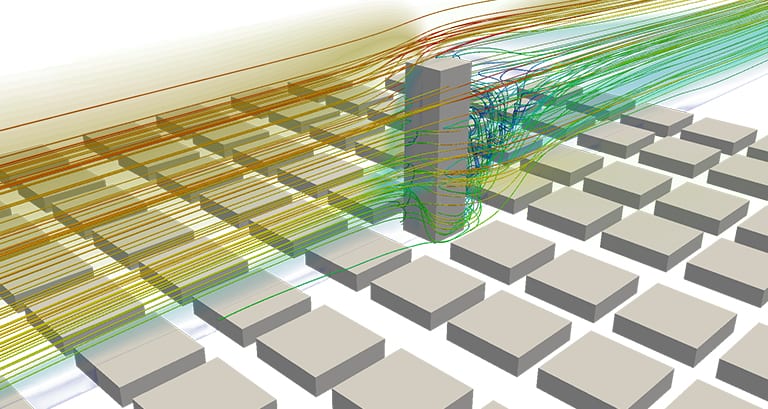
Simplified Method
If your building is low rise, symmetrical, completely enclosed and rigid (lowest vibration frequency larger than 1 Hz), and there are no flow-disturbing elements nearby, the simplified method is permitted. The building should not be prone to developing unstable motions (such as galloping or fluttering) or be situated in a location where turbulence may occur (such as in the wake of another building or on a hill).
Analytical Method
Any building that falls outside of the characteristics above must use the analytical method. This applies to flexible buildings (vibration frequencies below 1 Hz) and takes into account effects caused by motion in the direction of the wind load. The building still has to be of a regular shape and not be prone to instability due to wind load or turbulent flow.
Wind Tunnel Method
Buildings of an irregular shape or those that are subject to exceptional conditions are required to be tested in a wind tunnel to determine wind loads. A scaled-down model of the building that includes its most important features is built and controlled flow conditions are applied to measure pressure levels and dynamical response.
So where does CFD come into play? Well, as you might have noticed, CFD analysis is not a valid approach to determine wind loads conforming to the code at this time. However, this doesn’t mean that CFD simulations cannot be of use for architects and designers following ASCE 7. Let’s explore a few scenarios below.
Useful Applications of CFD for Building Design
Although the results of a CFD simulation are not submittable according to the ASCE 7 code (yet), they are still a powerful tool to gain insights into wind flow behavior around the building and estimate pressure loads alongside standard building aerodynamics. It’s also important to note that the majority of codes provide only minimum load levels for common buildings. It is ultimately up to the engineer to judge whether the requirements set by the code are sufficient to guarantee the safety and performance of their building. If it is estimated that special conditions might generate higher wind loads or turbulence (which can cause resonance in a flexible structure or part of it, e.g., the infamous Tacoma bridge collapse), or that the shape of the building demands a deeper flow study, CFD can provide useful and insightful results to help make inform design decisions earlier in the process.
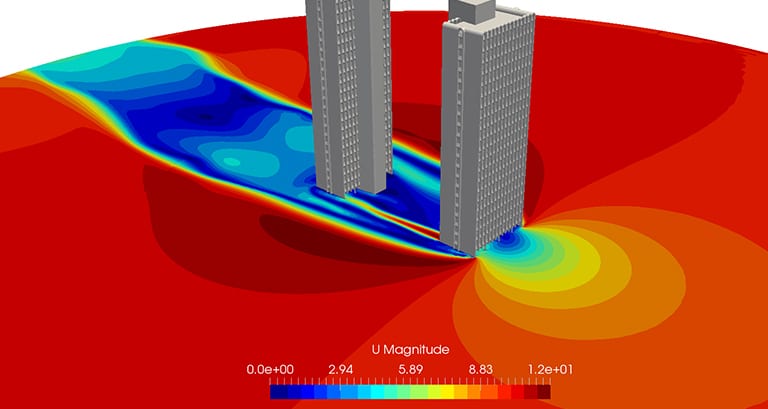
Effect of Surrounding Bodies on Wind Flow
While the ASCE 7 code provides analytical rules that take into account the presence of surrounding objects, such as hills or other high- and low-rise buildings, a more detailed analysis of the effects of certain obstacles on the wind flow can be advantageous to engineers. A CFD simulation can be used to predict and measure effects such as wake characteristics, vortex formation, tunnel throttling, and wind speed and direction at the building of interest.
Turbulence and Vortex Formation and Effects
Given the correct conditions, turbulent instabilities in the flow can develop, deviating the behavior from the analytical laminar case. Corners, discontinuities and high wind speed—among other factors—can trigger seemingly random movements in the flow. Designers can use CFD to predict such phenomena, measure their pressure effects, and assess if it poses a threat to the safety or performance of the building.
Fluid-Structure Interaction
A more advanced type of simulation, fluid-structure interaction analysis allows engineers to take into account the flexibility of the structure and its subsequent deformation due to flow pressure forces. In this way, the analyst can accurately predict dynamical instabilities, unstable motion or dangerous vibration modes induced by the wind load.
Learn how to leverage the cloud-based SimScale platform to optimize your design based on accurate results and ensure pedestrian wind comfort and safety!
Preparation for Wind Tunnel Testing
Wind tunnel test experiments are expensive and cumbersome. Ahead of time, preparation and planning are crucial to avoid errors and cost overruns. A virtual wind tunnel test (with CFD) can be performed earlier in the design stage, to determine expected behavior and find realistic estimates of the measurements at the scale to be used in the wind tunnel. Sensor placement and relevant feature modeling can be determined based on simulation results with confidence. Additionally, by having both full-scale and scaled-down CFD models, correlation and extrapolation accuracy can be improved for the physical test measurements.
Assess Pedestrian Wind Comfort
It is usually only after a building has been completed that any wind tunneling and vortex formation caused by its features is discovered. These effects can significantly impact pedestrian wind comfort and in extreme cases, pose a safety risk. With CFD simulation, engineers can predict and measure flow behavior ahead of time, and make changes in the design phase, avoiding late, unexpected alterations and associated costs.
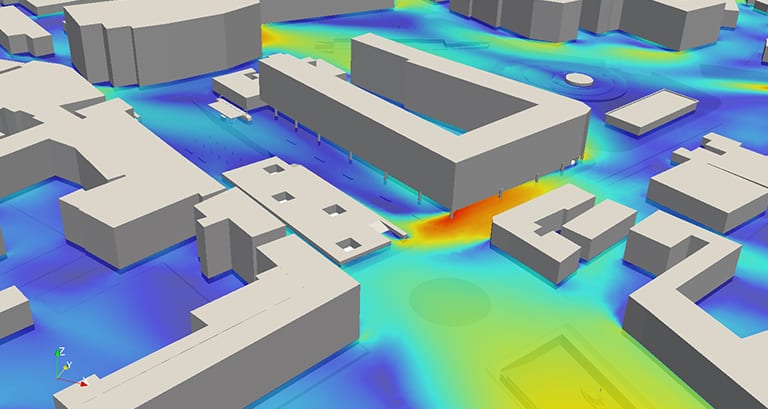
How SimScale is Improving Access to CFD
While the benefits of integrating CFD into the design process are clear, for architects and engineers, uptake has been slow for a number of reasons. Traditionally, CFD tools have been expensive to implement and maintain, difficult to operate and limited in their flexibility.
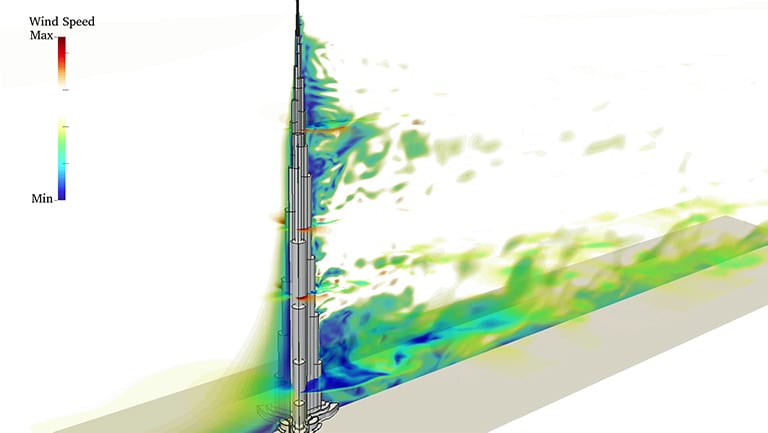
At SimScale, our aim is to open up access to this technology to a wider range of people and businesses. By leveraging the power of cloud computing, all processing and data storage is done remotely, with automatic security and backups, giving you access to immense processing power at a fraction of the cost. Our platform is accessible on any computer, anywhere, through a web browser, removing the need to install and manage local software and licenses. And, with our free Community account and public reference projects, you can start simulating from day one.


